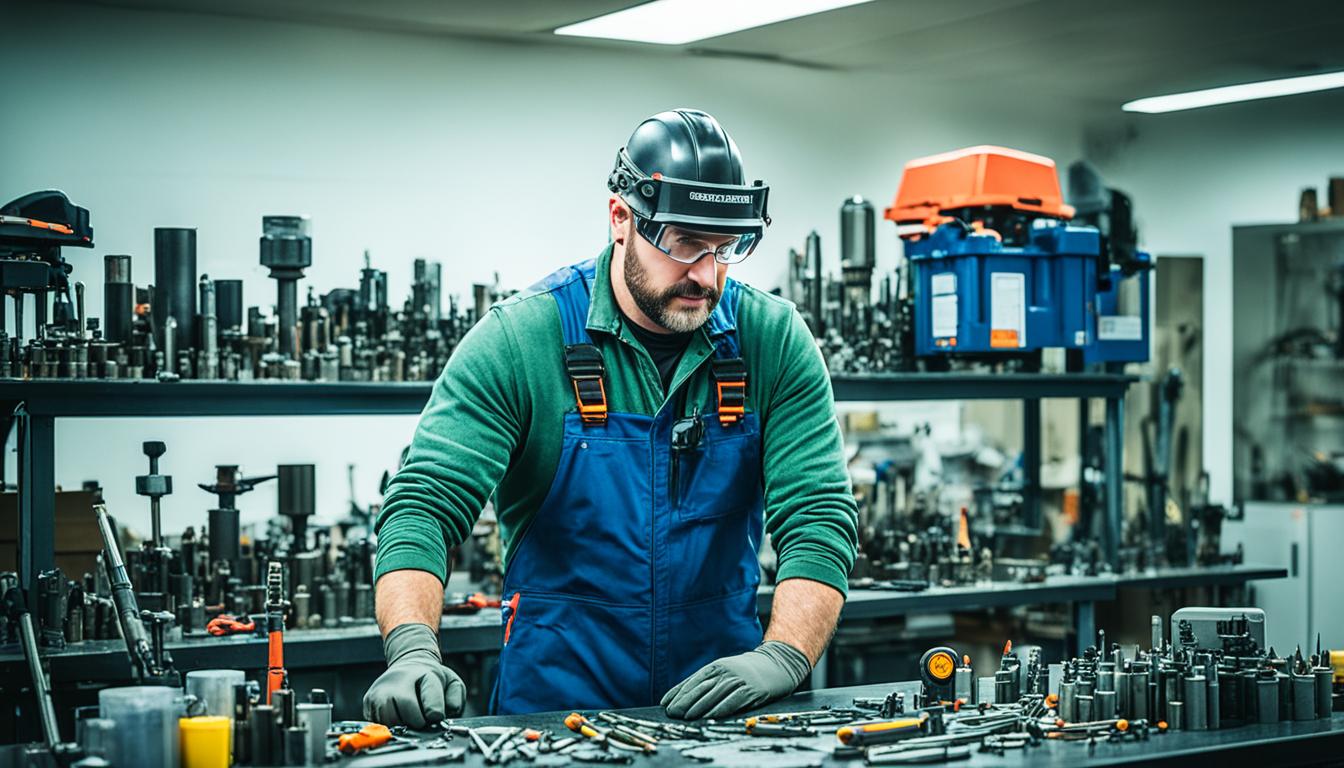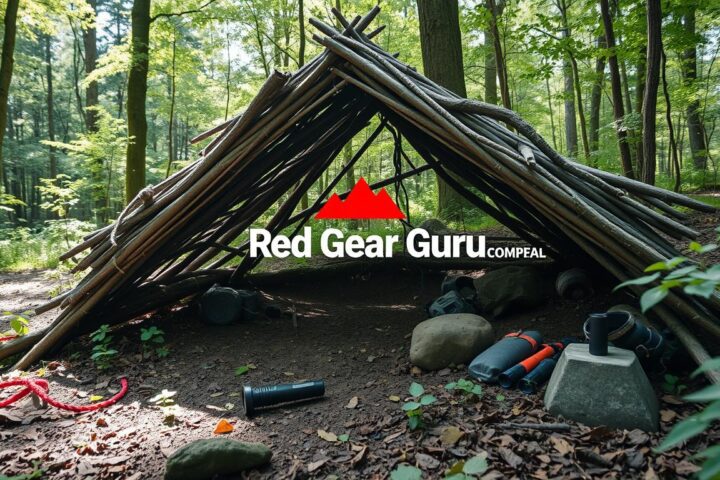Did you know over 12 million Americans make their own ammo each year? This fact shows more people want to be self-reliant and prepare for different situations. They’re looking into making their own ammunition at home. But, the laws around this can be tricky.
When it comes to making legal ammo at home, it’s key to know you can do it for personal use. But, the ATF has rules that affect how you can make DIY ammo. This part will look at what affects home ammunition legality. It aims to help you make DIY ammo legally.
Key Takeaways
- Over 12 million Americans engage in some form of DIY ammo production annually.
- Making ammunition for personal use is generally permitted under federal law.
- Local regulations and permits can influence the legality of home ammo production.
- The ATF regulates the manufacturing of ammunition and requires compliance with federal laws.
- Understanding state-specific laws is crucial for safe and legal ammunition crafting.
Understanding the Basics of Home Ammunition Production
Exploring home ammunition production starts with knowing its key parts. The main parts are casings, primers, powders, and projectiles. Each one is vital for the ammo to work well and shoot right.
The casing is the outer layer that holds everything together. Primers start the powder burning when hit. Powders come in different types and change how fast and strong the bullet goes.
Projectiles, or bullets, vary in weight and design. This affects how accurate and powerful they are.
People make their own ammo for many reasons. Some want to save money, while others like making their own rounds. It’s also a fun hobby linked to American handgun culture.
Learning about ammo isn’t just about the parts. It’s also about the different types of ammo out there. For example, the .458 SOCOM is made for certain rifles like the AR-15. Knowing this helps make ammo that fits your needs and likes.
Legal Considerations for Crafting Your Own Ammunition
Making your own ammunition legally means you must follow a set of rules. The ATF has rules about what materials you can use and the certifications you need. It’s important to know these laws to avoid legal trouble.
Devices like bump stocks have changed a lot in the law. Since they were first approved, there have been many legal changes. Now, there are debates about banning them in places like Ohio.
It’s also key to know the laws in your area. Different states have different rules for making your own ammo. Some states have stricter rules than others. It’s important to understand these differences to know what you can do.
Personal responsibility is a big part of making your own ammo. You must be careful with the materials you use and how you make your ammo. If you make a mistake, you could face serious legal issues.
It’s always a good idea to keep up with the latest on ammo laws. Talking to trusted sources can help you stay informed. For example, you can learn about changes to bump stock laws here.
State-by-State Ammunition Laws and Regulations
Exploring state ammunition laws shows big differences across the U.S. Each state has its own rules about making ammo, which affects people who want to make their own. These rules can change a lot from one place to another.
States have different levels of strictness when it comes to ammo laws. For instance, California has strict rules on both selling and making ammo. On the other hand, Texas lets people make their own ammo more freely.
A recent case in Gloucester County shows how different states have different laws. Four people were found not guilty for having guns at school because they followed the law. One person got 30 days in jail for an old permit, but the others were free to go. This shows how state ammo laws can be complex and vary a lot.
It’s important to keep up with changing ammo laws in my state. Using resources that explain ammo laws can help. For more info, check out this useful resource.
The Process of Making Ammunition at Home
Making ammunition at home needs careful planning. It’s important to focus on safety, precision, and following the law. By knowing the key tools and materials, I can make quality ammo for my needs. This is crucial for sports shooting or personal defense.
Essential Tools Needed for DIY Ammo
For DIY ammo, having the right tools is key. Here are the must-haves:
- Reloading press: A strong, dependable press is essential for making ammo.
- Scale: A precise scale helps with measuring gunpowder and bullet weights accurately.
- Safety gear: Safety glasses and gloves protect against dangers.
- Case tumbler: A tumbler cleans brass casings well.
- Die sets: Die sets for the caliber I’m reloading are needed for shaping and resizing.
- Priming tool: This tool makes sure primers are put in correctly without harming the casing.
Common Materials Used in Home Ammunition
After getting the right tools, picking the right ammo materials is next. Here are some common ones I use:
- Brass casings: They’re durable and reliable.
- Gunpowder: There are many types, and picking the right one is crucial.
- Bullets: Hobbyist-grade bullets are good for practice, while premium ones are for precise shooting.
Knowing about the tools and materials makes making ammo at home easier. Looking for trusted sources for these items helps keep my ammo safe and quality. For more safety tips, check out this guide.
Common Myths About Home-Made Ammunition
Many people who want to make their own ammo face a lot of myths. These myths can make people doubt the safety and legality of making ammo at home. It’s important to clear up these false ideas to help people understand the truth.
One myth is that homemade ammo is always unsafe or doesn’t work well. But, when made with care and good materials, it can be safe and work great. Another myth is that making your own ammo is illegal. This isn’t true, as it depends on the laws in your state and following the rules.
Some think making homemade ammo is too hard and needs a lot of knowledge. But, it’s not that hard, and there are many resources and groups to help beginners. This makes it easier to learn.
- Homemade ammunition is not uniformly dangerous.
- Most people can learn to create safe and effective rounds.
- Legal issues often stem from misunderstandings rather than facts.
These myths stop many people from trying the fun hobby of making ammo. By clearing up these false ideas and sharing the truth, I hope to encourage safe and responsible making of ammo.
Ammunition, Bullets, Ammo, Ammo & Bullets, Ammunition Review
I look into different types of bullets and ammo for various uses like self-defense, sports shooting, and hunting. In this ammunition reviews section, I’ll talk about the best options. Many brands are known for their trustworthiness and good results.
The Springfield Prodigy Comp is a standout with its .907 inches accuracy for five shots from 15 yards. This is much better than the usual 1.5 to 2 inches for handguns. It’s a top choice for those who want accuracy in their top ammunition reviews.
The Prodigy Comp works well with different bullet weights and types. I tested it with about 500 rounds without any problems. It showed consistent ammo performance. It’s priced around $1,734, which is good compared to its predecessors.
When making a choice, it’s good to know what these ammunition reviews say. Think about the price, how well it performs, and what others say. I suggest looking at all these factors to pick the best ammo for you. For more tips on shooting, check out this useful guide.
Safety Measures When Making Your Own Ammo
Making your own ammo at home means you must focus on safety. It’s important for your safety and the safety of others around you. It’s key to follow ammo safety rules to make this hobby safe and responsible.
Best Practices for Handling Materials Safely
Handling ammo safely means taking a few important steps. Always wear safety gear like gloves and goggles. Keep your workspace tidy and separate your materials and tools. These steps can greatly lower the risk of accidents.
- Keep powder and primers in a cool, dry area.
- Never smoke or have open flames nearby.
- Store materials in clearly labeled containers to prevent confusion.
- Regularly check all equipment for wear and ensure it is in good working condition.
How to Store Your Home-Made Ammunition
Storing your homemade ammo right helps prevent accidents and keeps it in good shape. Using the right storage methods is key to being a responsible owner. Here are some tips for storing your ammo:
- Store ammunition in a locked container away from children and unauthorized users.
- Maintain a stable temperature and humidity to avoid deterioration.
- Use moisture-absorbing containers or desiccants to prevent corrosion.
- Label stored ammo with the date of manufacture and type for easy identification.
Following these steps ensures you handle and store your ammo safely. It also makes sure you’re following firearm safety rules and legal guidelines. For more info on safety rules, check out relevant safety guidelines.
Where to Find Resources for Ammo Crafting
For those interested in ammo crafting, many resources are available. Start with DIY ammunition guides for a deep dive into making your own ammo. These guides cover key aspects of crafting, giving you the info you need.
Online forums are great places to learn from others’ experiences. They offer a wealth of knowledge and answers to your questions. Plus, instructional videos can help you see the process up close.
Books on ammunition production are also key resources. They provide detailed explanations and tips. Some even share where to find more reloading info, helping you get ready for the task.
Checking out reputable websites about firearms and ammo keeps you up-to-date with the latest. For a wider view, look into resources on gameplay mechanics. The game “Once Human” has many crafting specializations that might inspire your ammo crafting.
To master ammo crafting at home, use a mix of online forums, books, videos, and websites. Always focus on safety and keep up with trusted info to improve your crafting.
Conclusion
We’ve looked into making ammunition at home, from legal aspects to the detailed steps. Making your own ammo can be rewarding but comes with big responsibilities. It’s key to know the laws at both state and federal levels for safety and to follow them.
Important tools and materials are needed for making ammo at home. Safety steps are also crucial to protect yourself. I stressed the importance of doing your homework and staying updated with new laws and safety tips.
As I wrap up, I urge those interested in making their own ammo to keep up with law changes and safety advice. Being careful and informed makes the hobby safer for everyone. With the right steps, making your own ammo can improve your shooting skills and be very fulfilling.











